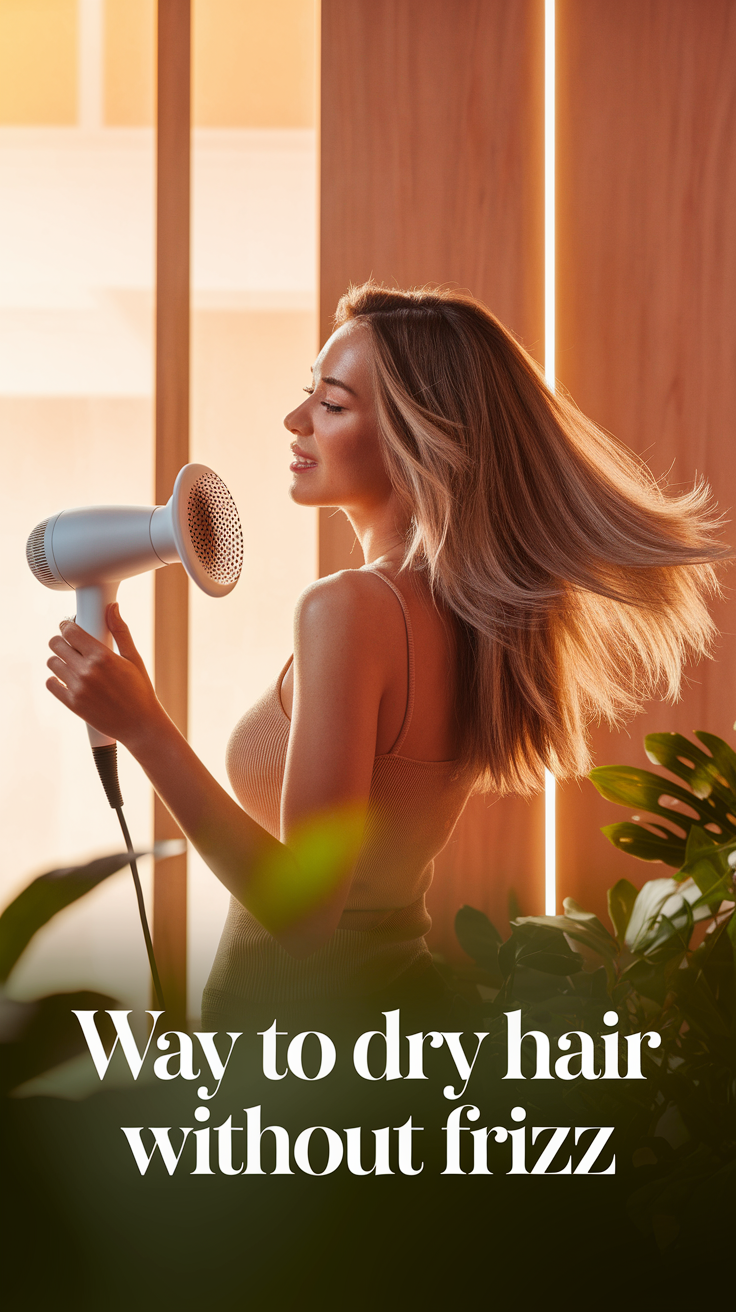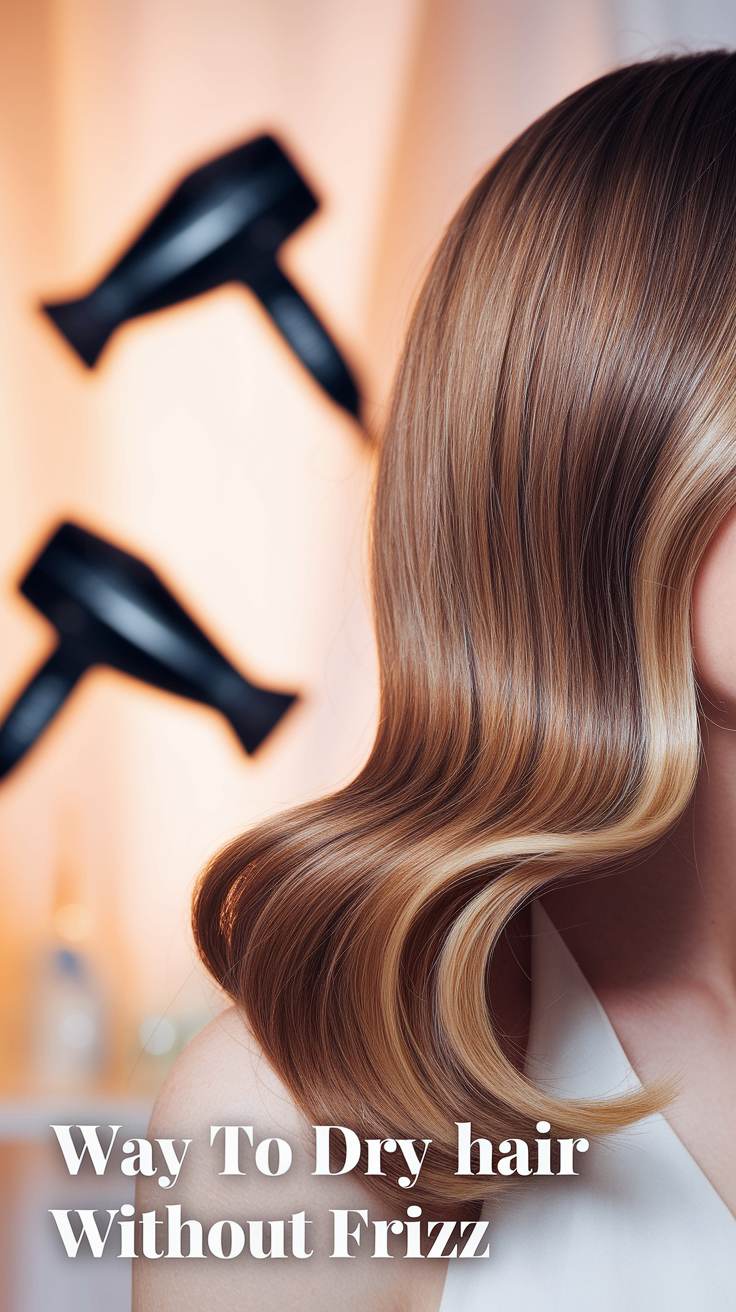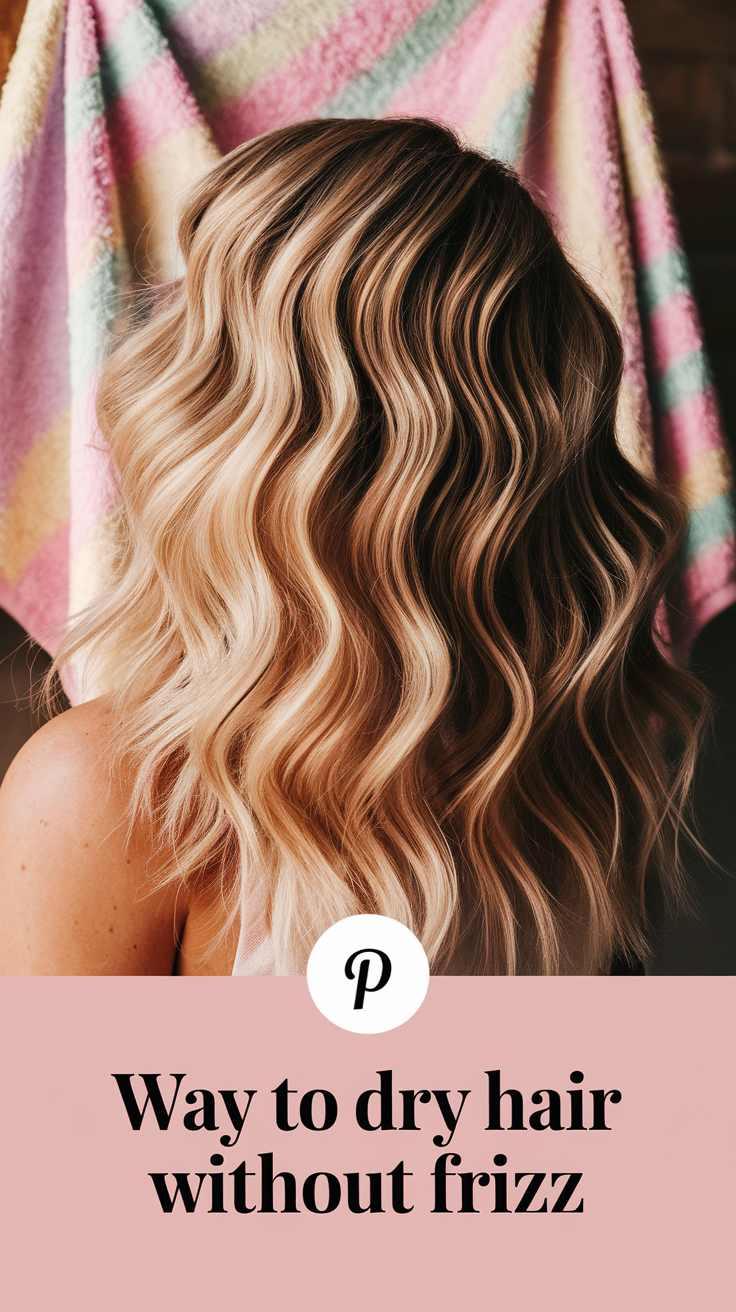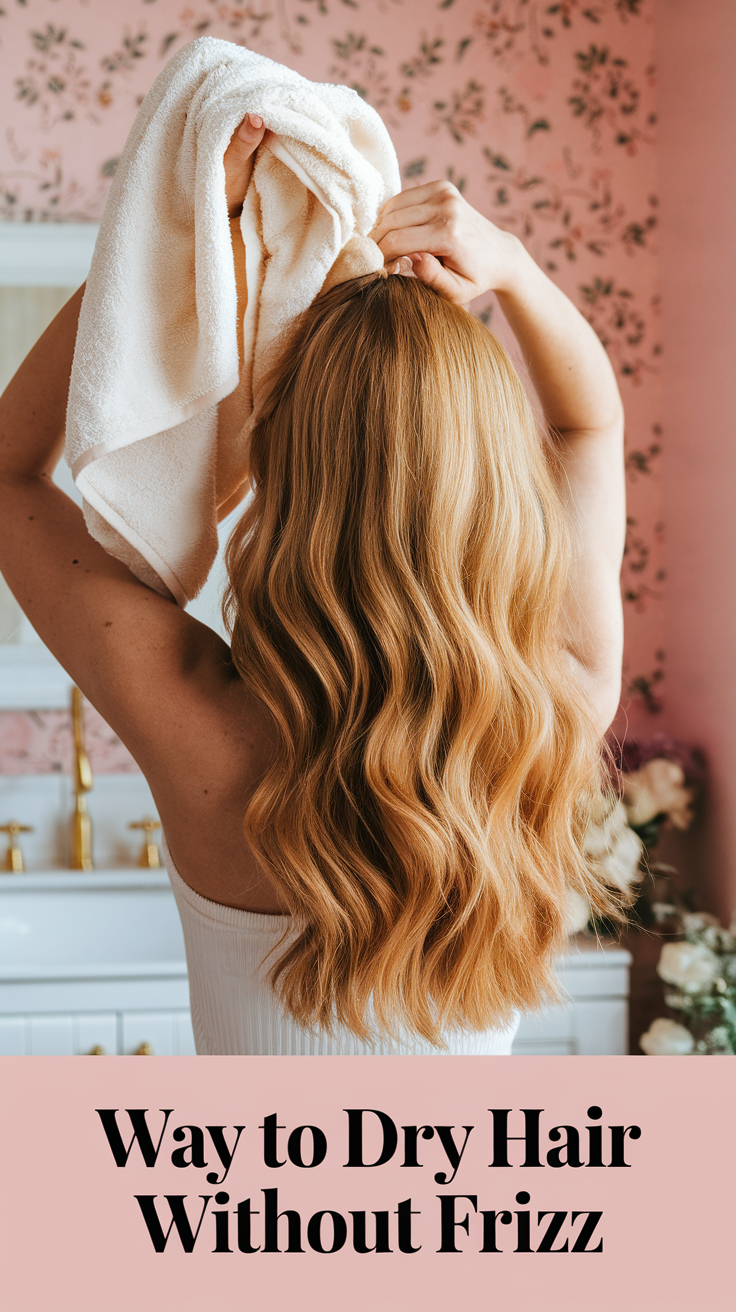
Hair specialists report that people typically generate between 70% and 80% of their frizz when drying their hair instead of using specific hair products. The current fashion trends prioritize clean beauty along with low-maintenance styling, thus prompting people to use natural drying techniques that prevent hair damage. Using top-quality shampoos and conditioners together will not prevent a frizzy disaster if you fail to dry your hair correctly.
A large number of people experience hair roughness, puffiness, and complete manageability issues following the drying process. Post-shower frizz tends to make an unwelcome appearance mainly due to heat usage, using rough towels or hasty styling practices. This article will examine expert-recommended methods for eliminating hair frizz during drying in 2025.
The article reveals the reasons behind successful methods while instructing you to stay away from problematic approaches and suggests the appropriate tools and products that will lead to frizz-free hair. Any form of hair, including curly styles and wavy types, along with straight locks, can depend on this guide to reduce frizz.
Please explain what specifically leads to frizz after drying.
Frizz arises when cuticles become damaged along with natural moisture loss from the hair strands. A properly preserved hair outer layer prevents environmental moisture from penetrating the hair strands during drying time. Frizzy hair forms when the cuticles escalate their size through swelling and thus create the signature frizz pattern.
A combination of environmental humidity, heating appliances, rough towels and combing dry hair worsens the situation. Using extremely hot water for hair washing removes essential natural hair oils, which makes hair prone to frizz development.
The structure of your hair matters, too. People with wavy hair types have higher probabilities of experiencing puffiness. The problem can happen to every hair type, no matter what their current state is when you use your hair care routine incorrectly.
Your hair shows frizz simply because you use improper techniques for maintaining it. The positive aspect is that technique needs to be repaired to resolve the problem.

Common drying mistakes that create frizz
Your smooth strands may be affected by certain drying practices, which would benefit from your immediate analysis. The following seven factors form the main group of hair dryers:
1. Rubbing hair with a towel
Aggressive rubbing of the hair strand elevates the cuticle while creating damage to the strands. People with frizz should use rough friction to control their hair since it helps minimize it.
2. Skipping the microfiber or cotton T-shirt
Regular towels do not provide comfortable water absorption. Gentle water absorption occurs when using soft cotton and microfiber, which reduces skin friction during drying.
3. Using high heat on a close setting
Excessive exposure of hot hairdryer air to your scalp results in burns rather than dryness of your hair. Inconsistent moisture evaporation due to hot air can cause hair to become frizzy and unmanageable.
4. Ignoring leave-in protection
Before blow-drying hair, use heat protectants and anti-frizz leave-ins as essential care products.
5. Brushing soaking wet hair
Before using a blow dryer, use heat protectants and anti-frizz leave-ins as essential products.
6. Not applying styling products on damp hair
Product needs moisture to maintain desired hairstyles. A product application during improper moisture conditions will lead to undesirable results.
7. Sleeping on wet hair without protection
This one’s sneaky. People who sleep with wet or damp hair without wearing silk or satin facing their hair experience friction as well as unpleasant tangles and ultimately end up with frizz.
No-heat drying methods for frizz-free results
Someone who wants to avoid using a blow dryer altogether will discover helpful methods from this article. Good news—you can! This article presents the best methods for drying your hair without heat but without creation of frizz.

Microfiber towel method
You should use either a microfiber towel or an old cotton T-shirt to lightly scrunch and blot your hair. Begin by starting your efforts at the ends of your hair while moving towards your scalp; refrain from using twisting or rubbing movements.
The “plopping” method for curls
After applying curl cream and leave-in conditioner, arrange your hair inside a soft cotton T-shirt, which you should place on your head like a plop. Using a plop with a soft cotton T-shirt not only creates curls but also eliminates frizz damage, all without compromising your natural hair length.
Air-dry on a pillowcase
Place your hair over a silk or satin pillowcase, then allow it to air dry without disturbance. The natural shape of your hair will remain intact while friction remains minimized.
| Drying Method | Ideal For | Time Needed | Frizz Control |
|---|---|---|---|
| Microfiber scrunch | All hair types | 15–30 min | High |
| Plopping | Curly/wavy hair | 30–45 min | Very High |
| Pillowcase air-dry | Straight/fine hair | 45–60+ min | Moderate |
Drying with a hair dryer—without the frizz
For some situations you need swift drying procedures, which is totally acceptable when used properly. Using heat properly is acceptable because it aids in effective drying. Here’s how to do it right:
Step 1: Start with damp, not soaking wet, hair
Your hair should spend 10–15 minutes in uncontrolled drying before you switch on the dryer. Subjecting hair to heat exposure is minimized, which leads to decreased puffiness.
Step 2: Use a diffuser or concentrator nozzle
The accessories spread air evenly across hair surfaces. A diffuser works best for curl types, while a concentrator should be used for wavy or straight hair.
Step 3: Keep it cool and distant
You must never use heat during this process, so select the warm or cool air mode. Apply the dryer at least 6–8 inches from hair while maintaining continuous motion.
Step 4: Dry in sections from ends to roots
Curl small section sizes either with your fingers or a wide-tooth comb. The roots should always receive the hairdryer first since this technique prevents frizzy hair from developing.

Products that support frizz-free drying
Utilizing the appropriate products can significantly impact outcomes. Below are the top performers for 2025, based on user reviews and experience Product selection determines significant positive or negative impacts on the final result. User reviews along with expert recommendations have named the following products as top performers for 2025:
| Product | Type | Best For |
|---|---|---|
| Olaplex No. 6 Bond Smoother | Leave-in styling cream | All hair types |
| Living Proof No Frizz Vanishing Oil | Lightweight oil | Fine or straight hair |
| Pattern Beauty Leave-In Conditioner | Creamy conditioner | Coily and curly textures |
| Briogeo Farewell Frizz Spray | Heat protectant spray | Blow-drying protection |
| Moroccanoil Treatment Light | Argan oil serum | Shine + moisture balance |
The products serve three essential purposes to prevent frizz: they protect the cuticle while reducing static electricity and holding moisture.
Step-by-step guide: how to dry your hair without frizz
The following list provides all you need to achieve smooth hair without frizz for any hair type.
- Use a microfiber towel to gently dry wet hair.
- Distribute a leave-in product as a cream, spray, or oil throughout wet hair with a smooth application.
- A wide-tooth comb combined with fingers makes the best tool to break up tangled hair.
- Rule one for air-drying your mane is to either let it drop freely without touching it or protect it with either plopping or a pillowcase.
- When drying hair from the ends to the roots upward, use blow-dryers with diffusers or nozzles set at their lowest heat settings.
- After applying your lightweight oil, it will work to seal in moisture.
Trending hair care habits in 2025
The smarter approach in beauty trends leads to 2025 hairstyling that produces maximum effect without requiring many steps.
- Minimal styling: Less heat, fewer products, more air-drying.
- Eco-friendly tools: Reusable microfiber towels and energy-efficient dryers.
- The emerging new hair standards now prioritize scalp well-being and natural hair treatment over appearance.
A scientific touch transforms basic handlings into modern procedures. The proper treatment of wet hair becomes as important as the products you apply to it.
Final thoughts: best practices to dry hair without frizz
We need to briefly reiterate the key methods for proper hair drying during 2025.
- Skip the towel rub. Blot with microfiber instead.
- Warm or cool air is the optimal temperature when applying heat to hair products.
- People must constantly apply either a protectant or a leave-in product.
- Maintaining delicate wet hair and avoiding any rubbing motions require caution.
- Your hair type and time will help you choose the right tools.
The key to smooth and frizz-free hair comes exclusively from developing proper techniques.
The floor is open for your perspective regarding your preferred drying technique. Have you completely moved away from using heat devices, or do you prefer a specific product to manage frizz? Share in the comments!
The link allows readers to share this article on Facebook, while Twitter followers may tweet it and WhatsApp users can forward it to their friends.

